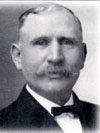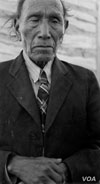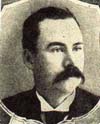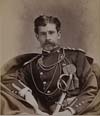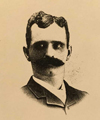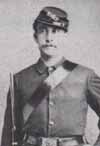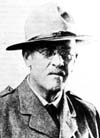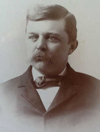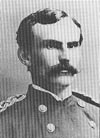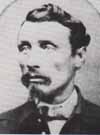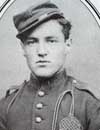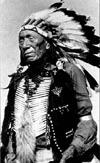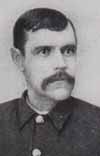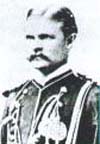Roman Rutten (who was also known as Roman Ruttenauer, Rutler, Rullin, and Bolten) was born on August 13, 1846, in Baden, Germany. He was a Private in Company M who fought in the valley and hilltop fights. He was wounded on Reno Hill.
Morris Cain died in Colville, Washington, on August 13, 1906. He was a Private in Company M who fought in the valley and hilltop fights.
Thomas Carmody died of cancer on August 13, 1912, in New York City and was buried in Calvary Cemetery in Woodside, Queens. He was a Private in Company B who was with the pack train and participated in the hilltop fight.
Fred Ernest Allan, who was also known as Alfred Ernest Allen, was born in Melton Mowbray, Leicestershire, England, on August 14, 1847. He was a Private in Company C who was killed while fighting with Custer’s Column.
Charles H. Houghtaling died on August 14, 1881, at Fort Lewis, Colorado, and was originally buried in the Post Cemetery there. He was later reinterred at the Fort McPherson National Cemetery in Maxwell, Nebraska. He was a Private in Company D who participated in the hilltop fight.
James Hill was born in Edinburgh, Scotland, on August 15, 1833. He was the First Sergeant in Company B who was with the pack train and participated in the hilltop fight during the battle.
Charles A. Windolph (left) also known as Charles Wrangel, married his second wife, Mathilda Lulow, on August 16, 1884, in Sturgis, Dakota Territory. He was a Private in Company H who suffered a wound during the hilltop fight for which he received the Purple Heart. He was also the recipient of the Medal of Honor for his heroic actions during the battle.
William Etzler married Mary Ann Hackett on August 17, 1877, in Bismarck, Dakota Territory. He was a Private in Company L who was with the pack train and participated in the hilltop fight.
Edwin Philip Eckerson died on August 17, 1885, in Hays, Kansas, and was buried in the Mount Allen Cemetery there. He was a 2nd Lieutenant in Company L who was enroute to the battle on June 25 and 26, 1876.
Christian Methfessel, who enlisted as Frederick Smith, died on August 18, 1905, in his hometown of Muhlhausen, Germany. He was a Private in Company K who was not present at the battle due to detached service at Powder River, Montana.
Jacob Huff died in Tilton, Illinois on August 18, 1929, and was buried in the North Grove Cemetery in Celina, Ohio. He was a Private in the band, which did not accompany the troopers to the battle.
Charles Theodore Wiedman married Florence Marston on August 19, 1882, but they divorced in March 1908. He was a Private in Company M who participated in the valley and hilltop fights where he suffered a gunshot wound in his left thigh.
Thomas Sherborne died on August 19, 1910, in Washington, D.C., and was buried in the Soldiers’ Home National Cemetery there under the name Thomas Shereborne. He was a Private in the band, which did not accompany the troopers to the battle.
Black Elk (left) died on August 19, 1950, on the Pine Ridge Reservation, South Dakota, and was buried in the St. Agnes Catholic Cemetery in Manderson. He was a member of Big Road’s Band and claimed two scalps during the Reno fight.

